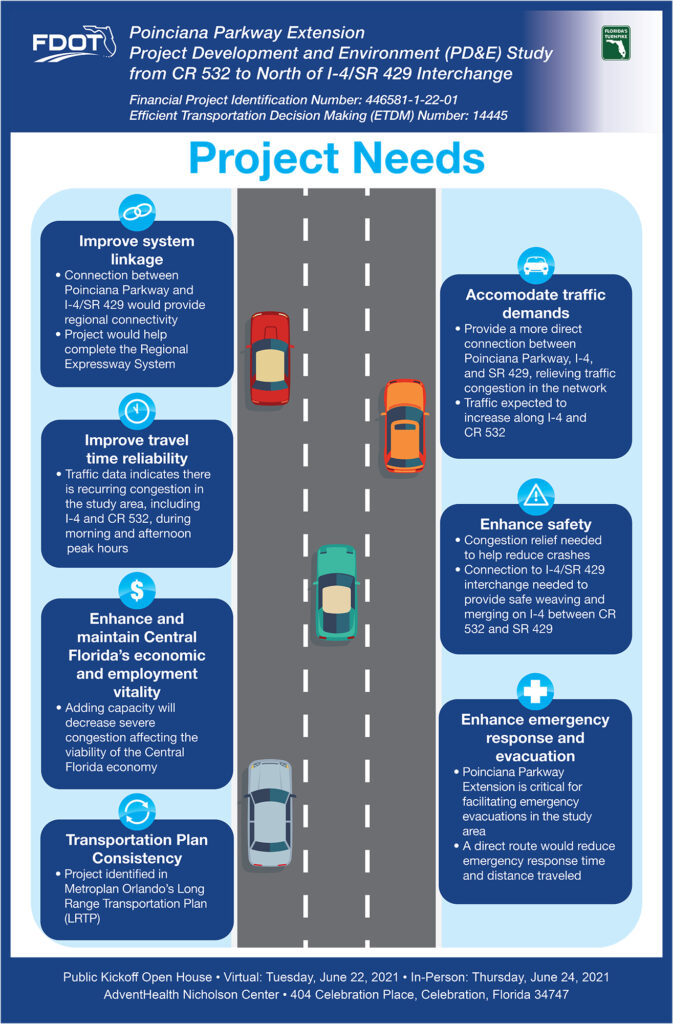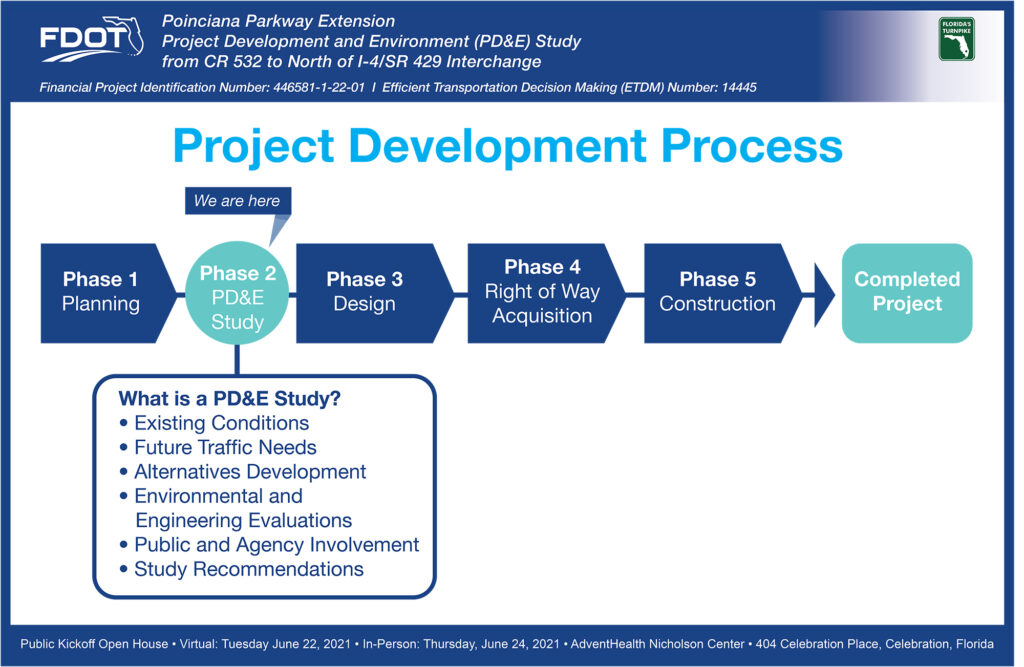The Florida Department of Transportation, Florida’s Turnpike Enterprise, welcomes you to the Public Kickoff Open House for the Project Development and Environment (PD&E) Study for the Poinciana Parkway Extension from County Road 532 in Polk County to north of the I-4 / State Road 429 interchange in Osceola County.
Please use the navigation menu to view public meeting videos and display boards. Clicking on the graphic will enlarge the view. The display boards are available for download on the main project website under the Documents section.
To provide a comment at any point during your visit, simply click on the “View Comment Form” button shown below. A comment form will appear, you may close the form to continue through the meeting. Once finished, complete your comment, and click “Submit.” We look forward to receiving your input and continuing to work with you throughout the study.
















